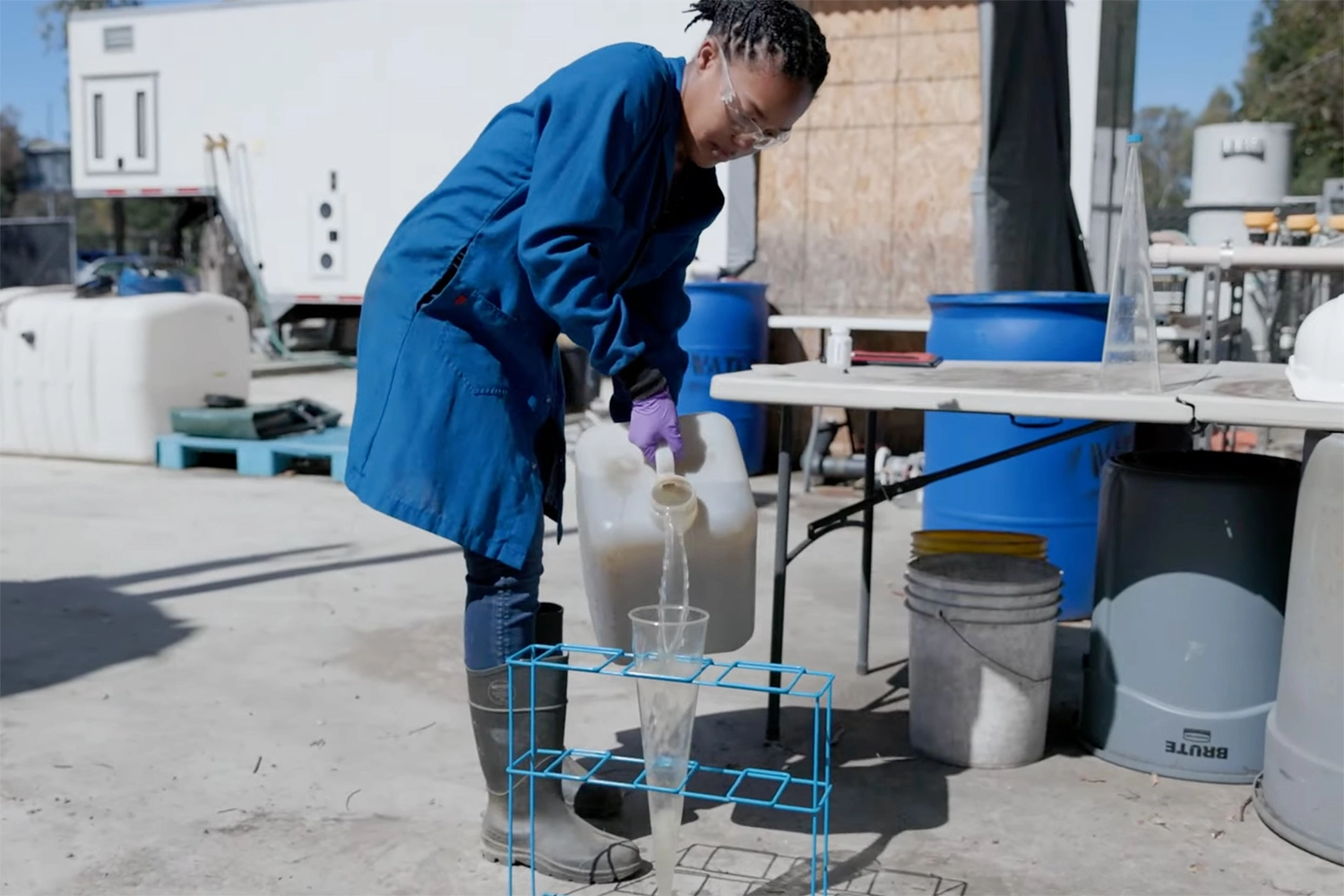
Photo: Stanford
US cities increase wastewater testing to counter the threat of monkeypox
17 August 2022
by Sarah Wray
Wastewater monitoring grew significantly during the pandemic and efforts are now underway to help US cities establish long-term infrastructure to continue to monitor COVID-19, as well as other infectious diseases such as flu, respiratory syncytial virus (RSV) and monkeypox.
Polio is also back on the radar after it was recently detected in wastewater in locations including New York and the UK.
Researchers at Stanford University and Emory University have launched WastewaterSCAN, a country-wide programme to promote a shared approach for monitoring diseases through municipal wastewater systems to inform public health responses locally and nationally.
The initiative is already producing data, including the first detections of monkeypox DNA in wastewater in the US. Monkeypox was declared a public health emergency by the Biden administration earlier this month.
“Because it’s population-based and unbiased by access to clinical testing, wastewater helps us understand infectious disease trends in a community. We’ve seen how valuable this can be as individual testing practices for SARS-CoV-2 have changed,” said Alexandria Boehm, professor of civil and environmental engineering at Stanford. “Genetic material of the pathogens we monitor has been documented in excretions from infected people that end up in the wastewater treatment system.”
City drive
As part of the initiative, WastewaterSCAN is partnering with the National League of Cities (NLC) to support a cohort of 50 of its member cities to implement wastewater monitoring.
“As we saw during the COVID-19 pandemic, community leaders play a critically important role in proactively managing health crises and this public health emergency is no different,” said NLC CEO and Executive Director Clarence Anthony.
“This partnership’s work to expand access to wastewater monitoring tools will help cities, towns, and villages across the country lead their response efforts to the monkeypox outbreak equipped with data and a network of support.”
Some cities are now beginning to launch monkeypox dashboards as they did for COVID-19.
New threats
With support from the Sergey Brin Family Foundation and Bloomberg Philanthropies, WastewaterSCAN expands on the Sewer Coronavirus Alert Network (SCAN) programme that was launched in November 2020 with 11 Northern California communities to monitor for the SARS-CoV-2 virus that causes COVID-19.
To date, 48 treatment plants in 12 states are receiving monkeypox results from WastewaterSCAN and SCAN in addition to results for the SARS-CoV-2 virus, influenza A and RSV. In all, the team has detected monkeypox DNA in wastewater in 22 locations.
Communities in California, Colorado, Florida, Georgia, Idaho, Kentucky, Michigan, and Texas are among those taking part.
Wastewater plants in participating communities sample three times a week. Verily Life Sciences, a health tech company owned by Google’s parent company Alphabet, processes the samples and makes the results available on a public website within 48 hours.
The materials and shipping are free to the communities, and stipends are available to cover some labour costs for sampling.
Getting started
Boehm said WastewaterSCAN’s goal is to demonstrate the need for a national sentinel system using wastewater to inform public health responses for COVID-19, monkeypox, flu, and RSV now, as well as to spur publicly funded, durable infrastructure to help prepare for future pandemics.
WastewaterSCAN reports its data to the Centers for Disease Control and Prevention’s National Wastewater Surveillance System (NWSS). Boehm said 1,176 wastewater treatment facilities now report data on SARS-CoV-2 to the NWSS.
“That is 1,176 more plants that have ever reported data to CDC on an infectious disease before,” she told Cities Today. “At the same time, there are approximately 16,000 wastewater treatment plants in the US, so fewer than one in 10 is reporting data to NWSS.”
She said that in many cities, connections between wastewater treatment plants and public health agencies are not in place yet, and some public health officials need initial support in interpreting the results.
However, Boehm commented: “The challenges for a city to begin wastewater monitoring need to be weighed against the challenges involved in getting a similar sensitive and accurate community-wide picture of infections. The kind of widespread clinical testing during the pandemic was unprecedented and would be equally difficult to mount again if another disease outbreak occurred.
“With the same sample of wastewater solids that weighs a half gram, we can monitor for many pathogens, and the process to switch assays to address new threats is relatively straightforward.”
There is also growing interest in using wastewater to measure trends in opioid use.
As use cases grow, some experts have proposed guidelines to ensure ethical wasterwater monitoring.











